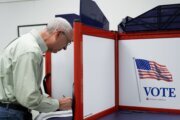High school juniors and seniors considering college options may concentrate on institutions’ course offerings, location and price — not a school’s cohort default rate. But overlooking the CDR is a mistake.
Prospective college students rarely consider what will happen to their student loans if they can’t complete their education or find a job after graduation. This may not seem like a problem before you’ve chosen a college, never mind borrowed student loans.
But student loan default has far-reaching ramifications, and with default rates on the rise, you should know how to measure your risk before choosing and enrolling in a college.
[Make sure to understand the consequences of student loan default.]
What Is CDR?
The CDR measures the percentage of student borrowers who left a college or university and defaulted on their student loans within a three-year period. The current CDR measures borrowers who went into repayment from Oct. 1, 2013, to Sept. 30, 2016.
The national average CDR for fiscal year 2014 is 11.5 percent — up from 11.3 percent for fiscal year 2013. That may not sound like much, but it equates to 580,671 additional borrowers in default. The national average breaks down to 11.3 percent for public colleges; 7.4 percent for private colleges, up from 7 percent; and 15.5 percent for for-profit colleges, up from 15 percent.
You can look up any college’s CDR or CDR trend directly through the U.S. Department of Education’s CDR site or via the National Center for Education Statistics’ College Navigator.
Are You at Risk?
NCES’ College Navigator provides annually updated information about every college in the country. Use this tool while researching prospective institutions.
In addition to reviewing the CDR, consider a school’s graduation rate. One of the biggest red flags is when the CDR is greater than its graduation rate — yes, this happens.
A college with a low graduation rate isn’t necessarily an ideal school to consider, but when a majority of students default on student loans within three years of leaving school, regardless of whether they graduated, this does not bode well for your chances of successful repayment.
Even if they have high graduation rates, avoid institutions with a default rate higher than the national average. If a large percentage of a school’s former students can’t keep up with their loans for the first three years of repayment, the school may not be properly preparing its students for postgraduation success.
[Check out four college stats to research before taking on student loans.]
How Much Debt Is Too Much?
Many additional factors play into why borrowers default, including overborrowing. The College Navigator provides the average debt of students who attended a particular college.
You can also estimate your overall debt for a school by subtracting your financial aid award from the total tuition. You can likewise use the Department of Education’s Repayment Estimator to determine your likely monthly payments for these loans and compare those payments with your estimated income.
Estimating income after college isn’t always easy, but you can ballpark a figure based on the program you are entering or your intended career path. If you’re still unsure, look at current graduates’ average starting salary.
If your projected monthly payments are greater than 10 percent of your estimated income, it could be difficult to pay down your debt in a timely manner. It is possible to make your federal student loan payments a manageable percentage of your income, but understand that this will likely extend your repayment term well beyond the standard 10 years.
It’s difficult to say no to your dream school, but you could set yourself up to fail from the beginning if you won’t be able to afford the debt you are required to take on to attend that institution.
[Know what to expect the first time you borrow college student loans.]
How Do You Stay on Track?
Academic struggles can also lead to future student loan problems. Of the student loan borrowers without degrees who entered repayment in 2011-2012, 24 percent defaulted on their student loans within two years, according to a 2016 College Board report. The report noted that the highest percentage was for balances lower than $5,000.
As you prepare to enter college, be sure to consider prospective colleges’ academic services. Most colleges have academic advising and tutoring as well as office hours to get assistance from your professors.
Although you might hope to not need these services, you’ll want to be prepared in case you start struggling academically. You will likely pay a lot for your education — don’t let it slip through your fingers.
Further, do your best to avoid the consequences of default, even if you are savvy with your borrowing and attend a school that prepares you well for a career. Keep track of your borrowing throughout college so that you aren’t surprised by what you owe at the end.
More from U.S. News
Speak Up About Student Loan Consumer Protections
Know the Tax Implications of Eliminating Student Loans
4 Steps to Handle Student Loan Fraud by Family Members
Factor Student Loan Default Rates Into College Search originally appeared on usnews.com







